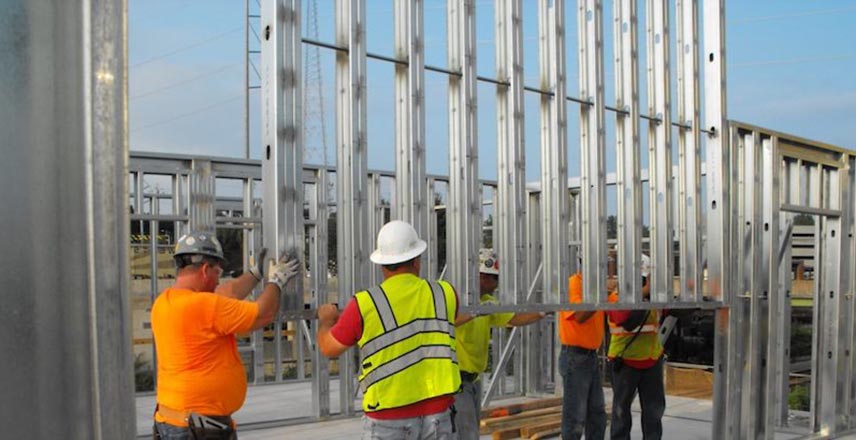Beneficial properties of steel
Steel has a unique combination of properties that make it an ideal construction material. Steel offers a number of significant advantages relative to other building materials, including:
- speed of construction
- safety
- value for money
- robustness and ductility
- prefabrication
- reduced weight
- architectural expression
- configuration adaptability
- sustainability
Safety
With up to 65% labor reduction achievable using a steel solution compared to traditional methods, fewer people equal a safer construction site. Prefabrication and dedicated lifting points on assemblies make for defined well-controlled erection processes. Steel decking and integrated edge protection facilitate safer working platforms.
Value for money
Faster construction means earlier handover and occupancy. Smaller member sizing (in particular, columns) equals greater net usable space. Longer spans equates to more flexible internal spaces.
Sturdiness and ductility
Steel is an inherently ductile material, responding to overload in a precise fashion with managed load retention. The size and shape of steel members can be configured to provide a level of structural robustness not easily achievable with other more fragile construction materials.
Prefabrication
Prefabrication brings fabrication shop control over quality and the dimensional accuracy of CNC machinery. Accurate control over measures reduces waste and workflows incorporating seamless integration back to the 3D design models ensure errors are minimized and architectural intent preserved.
Reduced weight
A steel structure is inherently lighter than a comparable concrete structure due to the higher strength and toughness of steel. With lightness comes reduced load on foundations, hence smaller foundations, and an ability to perform better for some ground conditions. Weight reduction enables retrofitting onto prevailing structures for extension or renovation. Adding extra floors to existing structures is a common example.
Architectural expression
The flexibility of steel gives architects the freedom to accomplish their most determined visions. Uniting form and function, steel can span incredible distances and offer fineness and enhancement to create what can only be described as steel sculpture.
Configuration adaptability
Given steel is fit together on site, normally with bolted connections, it's easy to reconfigure steel elements to suit change of the building or structure to different purposes. The clear lines of load transfer allow strengthening and retrofitting with direct on-site welding. Lowered weight allows for additional floors or extensions on existing buildings. Large spans help future repurposing of internal spaces with no or minimal structural modification.




